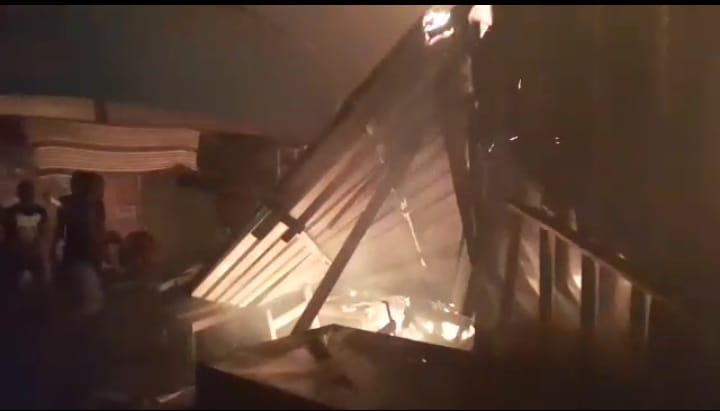Nii Martey M. Botchway
Accra, April 12, GNA – The Ghana National Fire Service (GNFS) says the lack of access routes affected effective fighting of the James Town and Madina Market fires.
It said extreme congestion at the two places made it difficult for the GNFS to put out the fires.
Speaking to the Ghana News Agency (GNA) after yesterday’s fire incident at the Madina Market that razed hundreds of stores, shops and containers, Assistant Divisional Officer I (ADO1) Alex King Nartey, said firemen faced difficulty in putting out the fires because they could not move the tenders.
He said apart from the unavailability of access routes, the Market, which was not properly mapped out, also did not have any available fire hydrant.
“The lack of access routes and poor mapping of the market made the fire spread faster,” he said.
ADO1 Nartey said despite the extent of damage caused by the nearly nine hours fire, the GNFS managed to prevent it from spreading, thus salvaging about 1000 stores, shops and adjoining properties.
He said the cause of the fire, which started at about 21:00 hours on Wednesday, was not readily known, and added that about 200 stores, shops, and containers were affected.
Mr Abdul-Jalil Yakubu, the Assembly Member for the area, who was there to assess the situation bemoaned the extent of the damage.
He said he would liaise with the appropriate authorities and stakeholders to map out modalities going forward.
The April 10 inferno at the market ravaged goods and properties until it was brought under control at about 5:30am Thursday morning.
Personnel from the Ghana National Fire Service, despite the initial challenges faced in breaking into the shops, were able to douse the fire.

In a related development, fire gutted over 500 wooden structures at a slum at Jamestown in Accra on Tuesday leaving hundreds of people homeless.
Items destroyed included personal effects, fridges and fish.
Like the Madina Market fire, there were no access routes for fire tenders to fight it.
“Accessibility to the site of fire was difficult as structures had been built too close to each other,” ADO1 Nartey said.
“Most of the fire outbreaks would be avoidable if best practices on fire safety are adhered to,” he added.
GNA